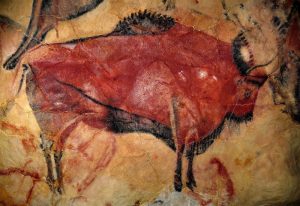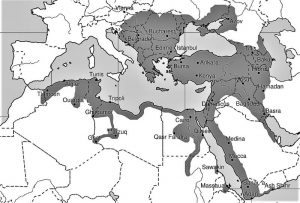Neolithic
In the Stone Age, the period known as the Neolithic had its beginning from 8,000 B.C. to 3,000 B.C. Its development occurred in the eastern Mediterranean, the Nile valley, Syria and Iraq and also some populations in northern Europe. There are investigations that confirm that the Neolithic was also present in America and Eastern Asia because there is evidence that these continents populations developed agriculture and the use of domesticated animals for food and clothing in those years of prehistory.
What is Neolithic?
The Neolithic is the last stage of the Stone Age in which agriculture, livestock and various animals are domesticated. Its beginning is present in several countries of Asia, North Europe, North Africa and America. The word Neolithic means new or polished stone and is temporarily located in the years 8,000 B.C. and 3,000 B.C. after the post-glacial period that forced man to change his life habits and develop another lifestyle linked to the use of land and animals for food and clothing. All these processes of change that help to develop the inventiveness of man makes the individual of this time to be called homo-sapiens or chromanone (this last adjective is given by the French cave where they found the skulls of men of this period).
The term Neolithic has Greek origin and means new stone or polished stone and this name is given because in this prehistoric stage, man began to polish the stone to work better agriculture and livestock. Other specialists in this field call it the age of domestic animals because at this time, man was able to dominate the dog, ox, horse and other animals for his own use.
This stage is the last of the Stone Age phases. The Neolithic arises as a consequence of the post-glacial period where climate change led man to modify his life habits and to discover agriculture and livestock to get their food and elements to protect themselves and build their homes.
Neolithic characteristics
- The Neolithic period is characterized by a population development in which the following elements were present:
- The use of polished stone for the creation of hunting tools and for agriculture, stockbreeding and the manufacture of fabrics.
- Animals were domesticated for farm work, livestock and food such as horses, oxen, pigs and dogs.
- The development of looms to produce clothing of animal origin (wool) or vegetable fiber for protection in different climates (cold and hot).
- The development of grazing.
- The development of pottery for liquid and grain collection.
- The use of crushed cereals to make flour and then bread.
- Communication between villages.
Neolithic man
The men of this moment of prehistory are known as homo-sapiens (Thinking Man) or Cro-Magnon (this is because the human remains of this stage were identified in a cave in France that has this name). The term homo sapiens is given by all the technological and scientific advances that humanity develops during this time. The Neolithic man descends from the mountains to settle in the countryside, goes from being a nomad to a sedentary entity that builds villages, develops new tools, domestic animals, works the field, makes tissues, creates objects with clay to collect liquids and grains, and so on. All these changes represent an evolution in human thought that will mark in the future the forms of food, clothing and shelter of future civilizations.
Tools of the Neolithic
The tools used in the Neolithic were built with wood and polished stone. Most of them were used for hunting, cattle raising, weaving, pottery and construction.
Architecture
In the Neolithic period man left the caves in order to build huts and villages near rivers in order to be able to fish, use water for himself and for agricultural and livestock work.
Economy
The economy was based on agriculture and livestock. Transhumance arises, which is a type of grazing that allows people to come into contact and facilitate communication between them, which stimulates the dissemination of techniques for the development of agriculture, livestock and culture in general of the Neolithic people.
Neolithic art
In the art of this period, the symbol replaces the image that was used in the Mesolithic period. This represents a change of style towards a more abstract and deeper art in the artistic manifestations of prehistory.
The theme in some cave paintings were outdoor hunting scenes. Many of them were discovered in western Europe.
There are other types of Neolithic artistic manifestations, discovered in Latin America, known as anthropoliths, zooliths and ornitholites that are figures in stone in the form of men or animals.
How to cite this article?
Briceño V., Gabriela. (2019). Neolithic. Recovered on 4 January, 2025, de Euston96: https://www.euston96.com/en/neolithic/










